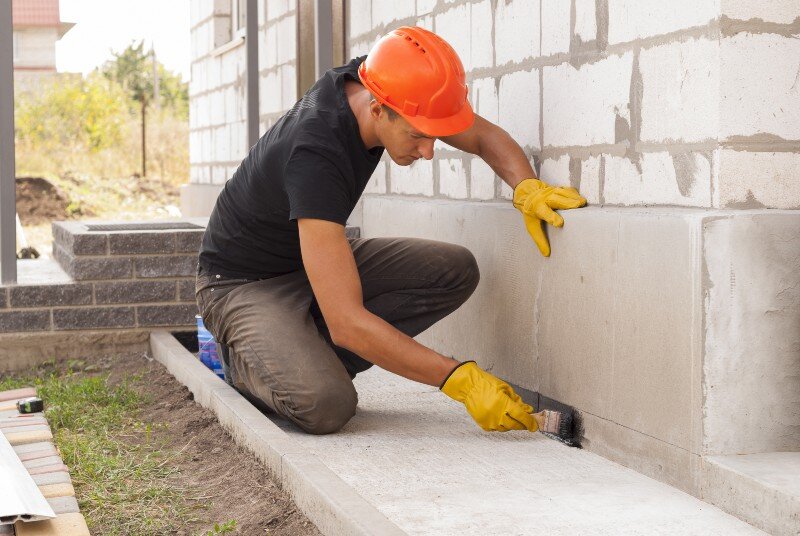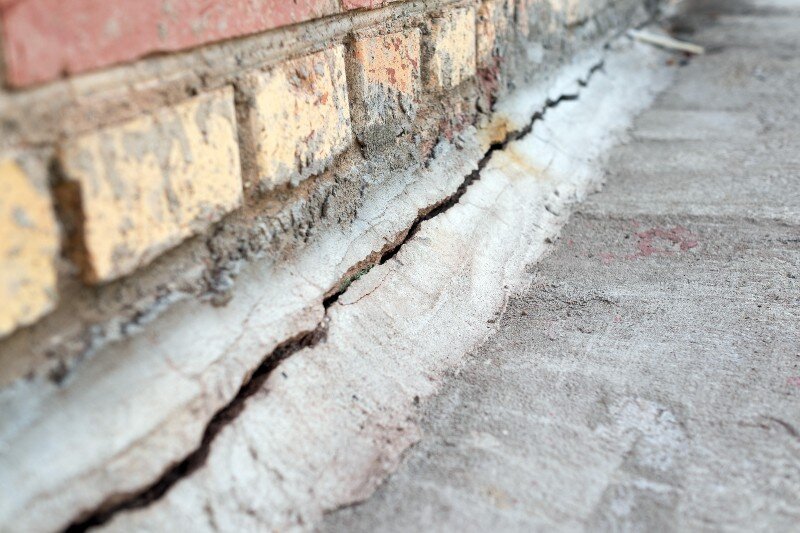
One of the greatest dilemmas when selling a house with foundation problems is whether should you fix up or sell your house as is. In this case, fixing your foundation problems can help to rank your property higher, which makes it a better option than selling it as it is.
Foundation issues and structural defects are common, especially in houses built in hot and dry climates or areas with expansive clay soils. If you plan to sell your home with foundation cracks, worry not, for we can help you identify these cracks and make the necessary repairs.
Since we buy houses Minnesota, here are compiled common types of cracked foundation repairs you should make before selling a house. Read on to learn the different types of foundation cracks and how much it costs to make the repairs.
Types of Cracked Foundation Repairs To Make on Your House
Below are different cracked foundation repairs to consider.
Horizontal Cracks
Horizontal cracks are common in brick foundations and cement blocks, which can be a serious problem if left unattended. Horizontal cracks mainly occur when unbalanced soil and water pressure strain the foundation walls. You’ll likely find these cracks during heavy rains, especially if you have a poor drainage system.
Horizontal cracks indicate fluctuations in temperature, causing soil pressure. When the water in the soil freezes, it is likely to put extreme hydrostatic pressure on your home foundation, causing cracks.
You can fix these cracks through carbon repair methods to stabilize the cracked walls. Also, take note of water leakage in your house, as both poured and block foundations are prone to develop horizontal cracks.
Stair Step Cracks
Stair step cracks occur along mortar joints, pausing a safety threat to your house. Ideally, there are two causes of stair step cracks; moisture-related problems and sinking in one area of the foundation.
Sometimes, the soil pressures or uneven support of your house’s foundation can cause cracks along the joints between blocks. You can quickly identify these cracks as they form a stair-step pattern.
Minor cracks don’t pause a threat to your house because they don’t go through the foundation. In this case, you can use injection techniques to fix the damage. However, consider pier installation when the wall has cracked through the foundation.
Hairline Cracks
Hairline cracks are common in new construction foundations. They often appear within one year of construction and are caused by the settling and drying of the new foundation. These cracks are cosmetic, and professionals can repair them.
Vertical Cracks
Vertical cracks don’t threaten your structure’s safety and integrity. These cracks primarily occur in a poured foundation which runs straight from the top to the bottom of your wall. However, you can repair your vertical cracks with epoxy, caulk, or polyurethane foam for crack injection.
Vertical cracks are the easiest to repair and are usually less than a ⅛ inch in width and appear in the middle walls of your home. As a homeowner, you can fix the issue through DIY to prevent water damage.
Diagonal Cracks
Diagonal cracks indicate an uneven foundation settlement, especially in houses built on a hillside. These cracks occur when some sections of your home settle faster than others. In other instances, cracks can occur due to changes in soil conditions during droughts or heavy rains.
In an example where your settlement is severe, you can install pliers to lift the settled part of the foundation.
Shrinkage Cracks
Shrinkage cracks occur when the poured concrete foundation begins to dry and lose moisture. When the water leaves the slab, it leaves large voids between the solid particles, which make it prone to cracking. Shrinkage cracks happen anywhere on drywalls or slabs but mainly in the corners which point into the slab.
Also, you may find these cracks on the circular objects in the middle of the slab, including gutters, downspouts, plumbing fixtures, pipes, and manholes. However, while concrete can’t shrink around a corner, stress will make the concrete block crack from that corner.
New houses are susceptible to shrink within the first year. This is because they are often vertical and do not pose a safety threat to your foundation. After that, however, your home will likely have a higher level of Radon Gas which can leak into your basement.
You can identify a shrinkage crack, as they are very narrow and barely visible. However, you should be careful because they extend throughout the slab regardless of their invisibility, compromising its integrity. In this case, you can incorporate control joints into the slab to prevent cracking, and it will open up as the concrete slab reduces.
Foundation Slab Cracks
The leading cause of foundation slab cracks is prolonged exposure to the forces of the natural environment. For this reason, your house is prone to developing cracks and fissures, no matter how sturdy the foundation is.
Specifically, foundation slab cracks can be due to topsoil erosion, repeated wetting and drying, root encroachment on concrete slabs, and naturally occurring foundation settling. Additionally, natural drying, settling, and curing of the concrete slab can develop these cracks, although they can lead to structural problems.
In other instances, poor workmanship from structural engineers involving underpinning, waterproofing, landscaping, poor drainage, and the lack of a sealant can lead to settlement issues on the slab, causing the formation of these cracks.
Frost heave is common in crawl space to slab foundations that sit above the grade. In this case, the water underneath the slab freezes, causing the concrete to split, especially during freezing. Consult with professionals to monitor the crack and make the necessary repairs to prevent extensive foundation damage.
Non-Structural Cracks
Non-structural cracks result in foundation leaks when the snow melts or during heavy rainstorms. While they don’t cause structural damage, water seeping into your house may be a safety hazard requiring attention.
Specifically, it can ruin your basement walls, floors, and belongings and contribute to mold growth. In addition, no matter how insignificant these wall cracks may seem, they may worsen with time, causing leakages into your home.
Wet Non-Structural
Wet non-structural cracks result from concrete shrinkage due to water evaporating from the concrete. You will likely see these cracks within the first month after pouring the foundation. Specifically, the more the concrete is wet in the initial stages, the more shrinkage will occur, increasing the likelihood of cracks formation.
You can use urethane as a sealant material for wet and leaking cracks. Urethane is a flexible substance that is easily injected into the crack and expands to fill the cavity when it comes into contact with water. Therefore, you should act fast when you spot moisture from the cracks to prevent further water damage.
Structural Cracks
Structural cracks pose a threat to the structural integrity of your house, which makes them a severe threat. You can quickly identify these cracks as they are horizontal cracks that are wider than a ¼ inch. The leading cause of these cracks is movement from soil pressure, changes in temperature, and soil shrinkage.
You can repair these cracks using epoxy. However, more than epoxy alone is needed, mainly because the pressure which caused the crack is likely to lead to more movement, increasing the extent of the damage. Therefore, further reinforcement with carbon fiber countersunk straps can help to prevent the cracks from extending further.

Which Cracks Are Imperative To Make Before Selling a House?
While small cracks don’t threaten your structure, some cracks are vital to make before you sell your house. Consider making the following repairs to increase your property’s value.
- Advisably, you should repair any cracks that measure more than a ¼ inch in width.
- You should repair any cracks that appear to be growing. These cracks are more likely to become a more serious issue if left unattended, threatening the new owners’ safety.
- It is imperative to make repairs when the foundation wall is bowing inwards. When you notice that your wall anchors are moving inwards, you should make the necessary repairs as they are susceptible to structural failures, which can cause the housing collapse.
While these cracks are extreme, consider seeking professional expertise to help you with the repairs. They are well-versed in the best methods to reinforce your house, to increase its value.
How Much Do Foundation Repairs Cost in Minnesota?
Foundation repair costs between $2,012 and $7,073. If this feels like a lot of money, you can always consider cash home buyers in Minneapolis.
While foundation cracks are some of the major house repairs, the cost varies with the extent of damage and the work involved. Specifically, several factors include the need for jacks and helical piers, warranty, resale value, and the additional services needed.
Consult with foundation repair contractors to find the exact cost based on your repair options.
Conclusion
Foundation cracks are common but can inhibit you from ranking your house higher in the market. In addition, these cracks may threaten your home’s structural integrity and safety.
For these reasons, consider making repairs before listing a house for sale, or if you need the money as soon as possible, sell a house fast in Plymouth with us and get the cash you deserve.
